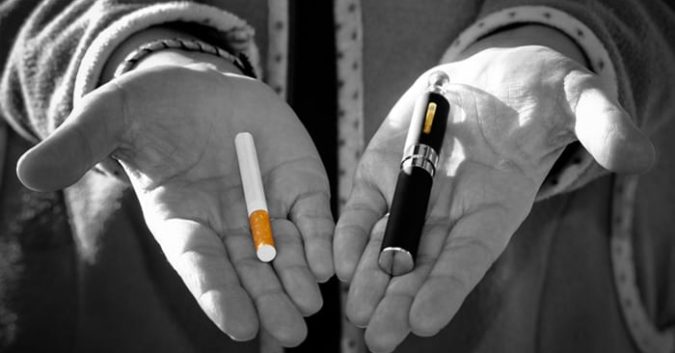About 10.8 million (or 1 in 20) American adults now use e-cigarettes. More than half of them are under 35-years-old and 1 in 3 of them smoke e-cigarettes on a daily basis.
This revelation comes from a new Johns Hopkins study of nearly 467,000 adults. Among them, researchers found, the risk of adopting e-cigarette use is particularly high in “vulnerable” groups including men and women in their 20s, unemployed individuals, LGBTQ individuals, and smokers of traditional cigarettes.
The data didn’t surprise researchers, however. These are groups already identified as more likely to smoke traditionally. But as to whether e-cigarettes can help smokers quit – for which the devices were supposedly designed – the study didn’t offer a clear answer.
Judging by other recent developments, e-cigarette use looks likelier to pose more trouble than it’s worth.
The Latest of E-Cigarette Explosions
One recent Saturday at Anaheim, California’s HDTV Outlet, a manager preparing paperwork for a customer’s purchase heard a sudden explosion.
He looked up to see the 24-year-old customer running toward him from the back of the store, screaming in pain. His right leg was severely burned. Surveillance video later showed that, as he stood taking measurements of his chosen TV, he jumped at an eruption of sparks – not from the television, but from the e-cigarette in his pocket.
An NBC Nightly News broadcast reported that this incident, like most of its kind, was “caused by lithium-ion batteries made overseas.” To date, “62 percent of explosions [have] happened while the e-cigarette is in someone’s pocket or actively being used.”
The incident ultimately represents the “potential for danger carried by millions every day,” the report continued.
Yet e-cigarettes don’t only have the potential to injure. They might be capable, according to recent research, of altering the user’s very DNA.
E-Cigarettes and Cancer: Is There a Link?
In another study conducted last month, researchers from the University of Minnesota’s Masonic Cancer Center (MCC) looked at the internal effects of chemicals in e-cigarette vapor. The goal was to understand how those chemicals interact with our DNA.
Researchers identified 3 problematic compounds – formaldehyde, acrolein, and methylglyoxal – whose levels increased after the study participants vaped for 15 minutes. From samples of their saliva, results found that 4 of 5 participants showed higher levels of a type of DNA damage called “DNA adduct.” This happens when toxic chemicals interact with DNA. If the DNA is so damaged that it can’t replicate as normal, cancer can develop.
Researchers acknowledged they need more studies to say definitively whether vaping causes cancer, but they did make an important point: that while e-cigarettes have ignited a growing trend, “the long-term health effects are unknown.”
“We don’t really know the impact of inhaling the combination of compounds produced by this device,” said lead study author Silvia Balbo, who stressed e-cigarettes are no substitute for traditional cigarettes and should be treated with caution. “Just because the threats are different, doesn’t mean that e-cigarettes are completely safe.”
What Should Consumers Do Now?
These aren’t the first developments to cast doubt on the safety of vaping. Previous studies have linked nicotine-containing e-cigarettes to oral disease, and even those without nicotine to inflammation and breathing problems. Dozens of consumers (at FEMA’s last count) have already been injured by e-cigarette explosions, embroiling manufacturers in e-cigarette lawsuits. This year, for the first time, a consumer’s injuries were fatal.
Other studies mark e-cigarette vapor as safer than tobacco smoke, while e-cigarette manufacturers market their devices as the safer alternative to traditional cigarettes. But at this point, we must question what “safer” means.
While e-cigarettes may contain fewer carcinogens than their traditional counterparts, their long-term risks are still largely unknown. We’ve already seen what e-cigarettes are capable of in the short-term – inflammation, breathing problems, and explosions – so it seems more accurate to describe e-cigarette use as “very risky” to say the least – something that cannot be embraced with confidence.
“I don’t believe e-cigarettes are more harmful than ordinary cigarettes,” said Dr. David Thickett, lead author of the cancer study. “But we should have a cautious skepticism that they are as safe as we are being led to believe.”
Until we have more research and the FDA finally decides to regulate the e-cigarette industry, the safest thing you can do is quit.
